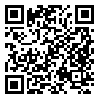Volume 16, Issue 3 (2026)
LRR 2026, 16(3): 245-272 |
Back to browse issues page
Download citation:
BibTeX | RIS | EndNote | Medlars | ProCite | Reference Manager | RefWorks
Send citation to:



BibTeX | RIS | EndNote | Medlars | ProCite | Reference Manager | RefWorks
Send citation to:
Janebi Enayat M, Mazlum F. The Interaction Between Lexical Cohesion and L2 Vocabulary Size and Depth in TOEFL Reading Item Types. LRR 2026; 16 (3) :245-272
URL: http://lrr.modares.ac.ir/article-14-74345-en.html
URL: http://lrr.modares.ac.ir/article-14-74345-en.html
1- English Department, Faculty of Humanities, University of Maragheh, Maragheh, Iran , m.enayat@maragheh.ac.ir
2- English Department, Faculty of Humanities, University of Maragheh, Maragheh, Iran
2- English Department, Faculty of Humanities, University of Maragheh, Maragheh, Iran
Abstract: (1097 Views)
Few studies have addressed the interaction among reader and text variables in reading comprehension. This research probed the role of aspects of lexical knowledge to the TOEFL reading comprehension of passages with low and high lexical cohesion. The extent of this contribution was checked for five types of TOEFL reading test items: Main Idea, Stated Detail, Inference, Reference, and Lexical Inferencing. For this purpose, 60 Iranian English as a Foreign Language (EFL) took the New Vocabulary Levels Test (NVLT), Word Associates Test (WAT), and TOEFL reading comprehension tests with low and high lexical cohesion determined through the computational tool Coh-Metrix. Results of Wilcoxon signed-rank tests revealed that the students outperformed on three types of TOEFL reading items (Main Idea, Inference, and Lexical Inferencing) for texts with high lexical cohesion. Multiple linear regression analyses further showed that vocabulary depth was a stronger predictor of the participants’ scores on Lexical Inferencing item of TOEFL reading texts with high lexical cohesion, while vocabulary size predicted the same item performance for the low-lexical-cohesion subtest. Moreover, vocabulary depth could significantly predict performance on Main Idea test item of TOEFL high-lexical-cohesion subtest over and above the low-lexical-cohesion subtest. The implications for teachers, test designers, and materials writers are discussed.
Send email to the article author
| Rights and permissions | |
 |
This work is licensed under a Creative Commons Attribution-NonCommercial 4.0 International License. |








